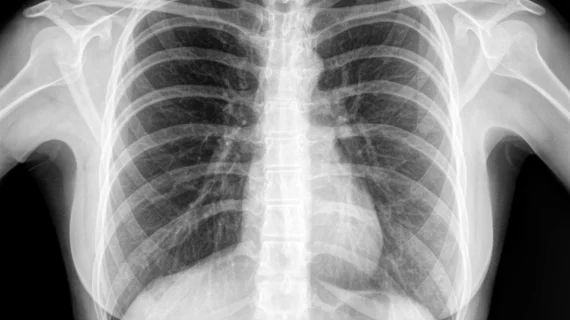Chest x-ray falls well short of lab testing in pinpointing COVID-19
Chest x-ray is sometimes deployed by radiologists to assess patients suspected of having coronavirus when CT is not available, but a new study casts serious doubts on that practice.
Hong Kong-based imaging experts recently spelled out their qualms in a retrospective study, published Friday in Radiology. In a sample of about 60 patients, the team found that baseline chest radiography logged a specificity of just 69%, compared to 91% for initial real-time reverse transcription-polymerase chain reaction testing.
“As the COVID-19 pandemic threatens to overwhelm healthcare systems worldwide, CXR may be considered as a tool for identifying COVID-19, but is less sensitive than CT,” concluded lead author Ho Yuen Frank Wong, with the Department of Radiology at Queen Mary Hospital, and colleagues.
To reach their conclusions, Wong et al. analyzed a handful of patients confirmed to have coronavirus using RT-PCR and chest x-rays. Those in the study were admitted to four Hong Kong hospitals between January and March.
Two radiologists scored each chest x-ray based on consolidation, ground-glass opacity, location and pleural fluid, assigning a severity index for each lung.
Of the cohort of 58, 91% had a positive initial RT-PCR test, while 69% had an abnormal baseline chest x-ray. Six patients (9%) showed chest x-ray abnormalities before eventually testing positive for COVID-19 using lab tests.
Hong and colleagues also noted that common chest x-ray findings for coronavirus mirror those previously described with CT—including bilateral, peripheral, consolidation and/or ground-glass opacities.

